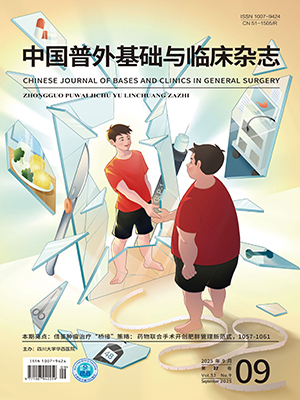| 1. |
Polsky S, Ellis SL. Obesity, insulin resistance, and type 1 diabetes mellitus. Curr Opin Endocrinol Diabetes Obes, 2015, 22(4): 277-282.
|
| 2. |
Shapiro AM, Lakey JR, Ryan EA, et al. Islet transplantation in seven patients with type 1 diabetes mellitus using a glucocorticoid-free immunosuppressive regimen. N Engl J Med, 2000, 343(4): 230-238.
|
| 3. |
Shapiro AM, Pokrywczynska M, Ricordi C. Clinical pancreatic islet transplantation. Nat Rev Endocrinol, 2017, 13(5): 268-277.
|
| 4. |
Rickels MR, Robertson RP. Pancreatic islet transplantation in humans: recent progress and future directions. Endocr Rev, 2019, 40(2): 631-668.
|
| 5. |
Rifai L, Saleh FA. Conventional and alternative mesenchymal stem cell therapies for the treatment of diabetes. Adv Exp Med Biol, 2021, 1312: 97-106.
|
| 6. |
Cayabyab F, Nih LR, Yoshihara E. Advances in pancreatic islet transplantation sites for the treatment of diabetes. Front Endocrinol (Lausanne), 2021, 12: 732431. doi: 10.3389/fendo.2021.732431.
|
| 7. |
黄孝伦. 胰岛移植治疗1型糖尿病的进展与挑战. 中华移植杂志(电子版), 2017, 11(3): 138-142.
|
| 8. |
Brennan DC, Kopetskie HA, Sayre PH, et al. Long-term follow-up of the Edmonton protocol of islet transplantation in the United States. Am J Transplant, 2016, 16(2): 509-517.
|
| 9. |
Nakamura T, Fujikura J, Anazawa T, et al. Long-term outcome of islet transplantation on insulin-dependent diabetes mellitus: an observational cohort study. J Diabetes Investig, 2020, 11(2): 363-372.
|
| 10. |
Rifai L, Saleh FA. Conventional and alternative mesenchymal stem cell therapies for the treatment of diabetes. Adv Exp Med Biol, 2021, 1312: 97-106.
|
| 11. |
Bellin MD, Kandaswamy R, Parkey J, et al. Prolonged insulin independence after islet allotransplants in recipients with type 1 diabetes. Am J Transplant, 2008, 8(11): 2463-2470.
|
| 12. |
Du S, Li Y, Geng Z, et al. Engineering islets from stem cells: the optimal solution for the treatment of diabetes?. Front Immunol, 2022, 13: 869514. doi: 10.3389/fimmu.2022.869514.
|
| 13. |
姚豫桐, 魏玲玲, 杨卯竹, 等. 同种异体胰岛移植治疗1型糖尿病10例及随访观察3年的临床研究. 中华器官移植杂志, 2016, 37(2): 90-94.
|
| 14. |
黄孝伦, 姚豫桐, 罗兰云, 等. 同种胰岛细胞移植及采用改良Edmonton方案治疗1型糖尿病三例. 中华器官移植杂志, 2014, 35(3): 160-164.
|
| 15. |
Mochida T, Ueno H, Tsubooka-Yamazoe N, et al. Insulin-deficient diabetic condition upregulates the insulin-secreting capacity of human induced pluripotent stem cell-derived pancreatic endocrine pro-genitor cells after implantation in mice. Diabetes, 2020, 69(4): 634-646.
|
| 16. |
施静, 魏玲玲, 冯天航, 等. 胰岛与骨髓间充质干细胞联合移植治疗Sprague-Dawley大鼠1型糖尿病远期疗效比较. 中华糖尿病杂志, 2018, 10(3): 226-233.
|
| 17. |
Aali E, Mirzamohammadi S, Ghaznavi H, et al. A comparative study of mesenchymal stem cell transplantation with its paracrine effect on control of hyperglycemia in type 1 diabetic rats. J Diabetes Metab Disord, 2014, 13(1): 76. doi: 10.1186/2251-6581-13-76.
|
| 18. |
Wang Y, Wang JW, Li Y, et al. Bone marrow-derived mesenchymal stem cells improve rat islet graft revascularization by upregulating ISL1. Stem Cells, 2021, 39(8): 1033-1048.
|
| 19. |
Wu X, Wang Y, Xu J, et al. MM-BMSCs induce naïve CD4+ T lymphocytes dysfunction through fibroblast activation protein α. Oncotarget, 2017, 8(32): 52614-52628.
|
| 20. |
Cnop M, Toivonen S, Igoillo-Esteve M, et al. Endoplasmic reticulum stress and eIF2α phosphorylation: the Achilles heel of pancreatic β cells. Mol Metab, 2017, 6(9): 1024-1039.
|




